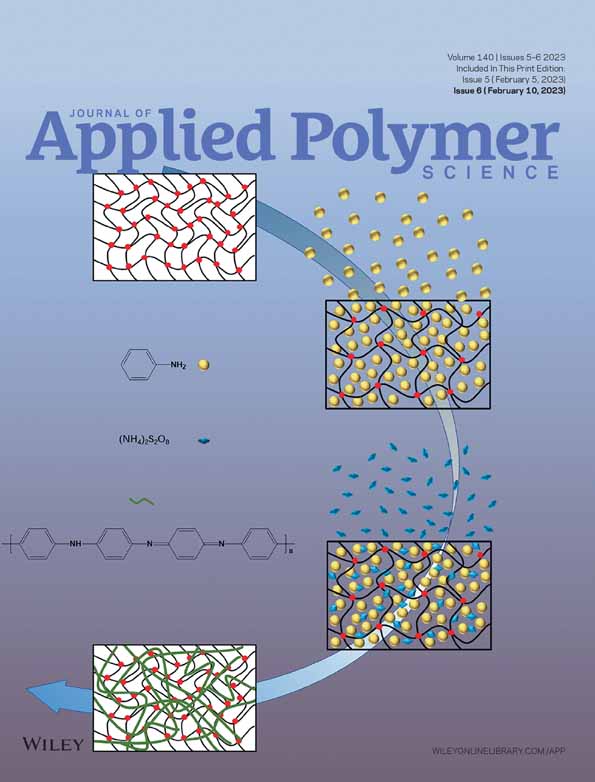Improving mechanical and thermal properties of short carbon fiber/polyamide 6 composites through a polydopamine/nano-silica interface layer
Funding information: Natural Science Foundation of China, Grant/Award Numbers: 51903129, 51803102; Natural Science Foundation of Shandong Province, Grant/Award Numbers: 201808220020, 201807070028; Source Innovation Project of Qingdao, Grant/Award Number: 19-6-2-75-cg; Industry and Education Cooperation Program of The Ministry of Education, Grant/Award Numbers: 201802230009, 201901078008, 201802201002
Abstract
Carbon fiber (CF) reinforced matrix composites have been applied widely, however, the interfacial adhesion of composites is weak due to smooth and chemically inert of CF surface. To solve this problem, A polydopamine/nano-silica (PDA-SiO2) interfacial layer on carbon fiber surface was constructed via polydopamine and nano- SiO2 (CF-PDA-SiO2) by a facile and effective method to reinforce polyamide 6 composites (CFs/PA6). The effects of PDA-SiO2 interfacial layer on crystallization structure and behavior, thermal properties, and mechanical properties of CFs/PA6 composites were investigated. Furthermore, interfacial reinforcement mechanism of composites has been discussed. This interfacial layer greatly increased the number of active groups of CF surface and its wettability obviously. The tensile strength of CF-PDA-SiO2/PA6 composites increased by 28.09%, 19.37%, and 26.22% compared to untreated-CF/PA6, CF-PDA/PA6, and CF-SiO2/PA6 composites, respectively, which might be caused by the increased interfacial adhesion between CF and PA6 matrix. The thermal stability, crystallization temperature, crystallinity, and glass transition temperature (Tg) of CF-PDA-SiO2/PA6 composites improved correspondingly, attributing to the heterogeneous nucleation of nano-SiO2 in the crystalline area and hydrogen bonds with molecular chains of PA6 in the amorphous area. This work provides a novel strategy for the construction of interfaces suitable for advanced CF composites with different structures.
CONFLICT OF INTEREST
This article has been written by Bowen Li, Guojun Song, Zhi Peng, Wenjian Zhang, Hao Zheng, Junjie Zhu, Chaohang Wang, Jianfa Wang, Ruiyue Ma, Shaoqian Zhu, Xiaoping Yang, Yudong Huang, Lichun Ma, who are all aware of its content. We declare that we do not have any commercial or associative interest that represents a conflict of interest in connection with the work submitted. The work described was original research that has not been published previously, and not under consideration for publication elsewhere, in whole or in part.
Open Research
DATA AVAILABILITY STATEMENT
The data that support the findings of this study are available on request from the corresponding author. The data are not publicly available due to privacy or ethical restrictions.




